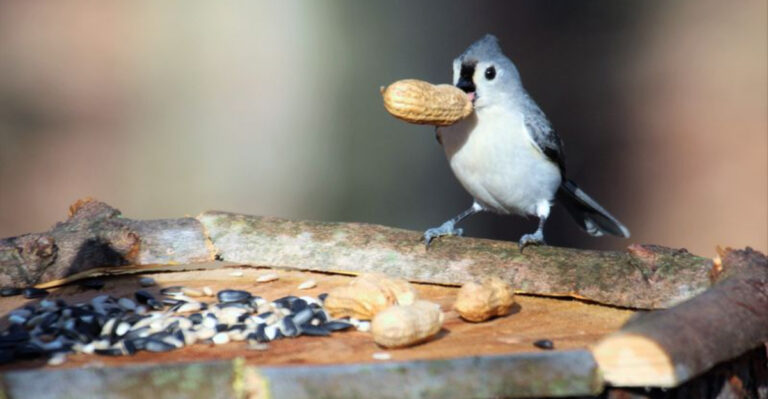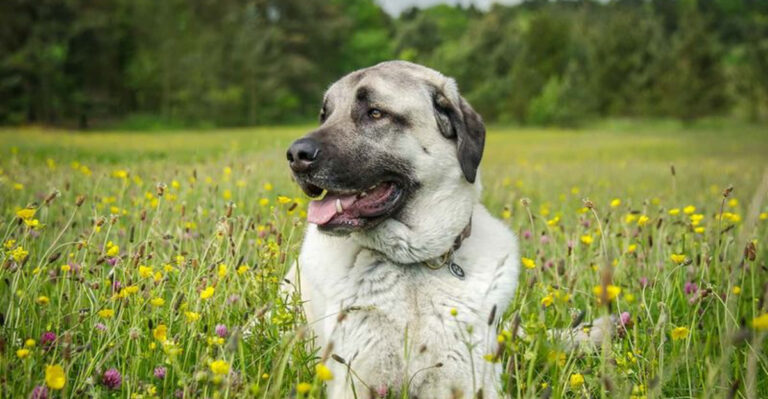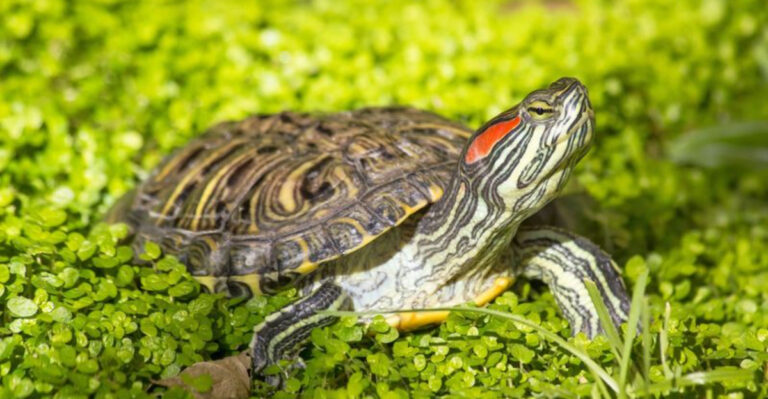8 Creatures Lurking In The Depths Of The Mississippi And 7 That Stay On Top
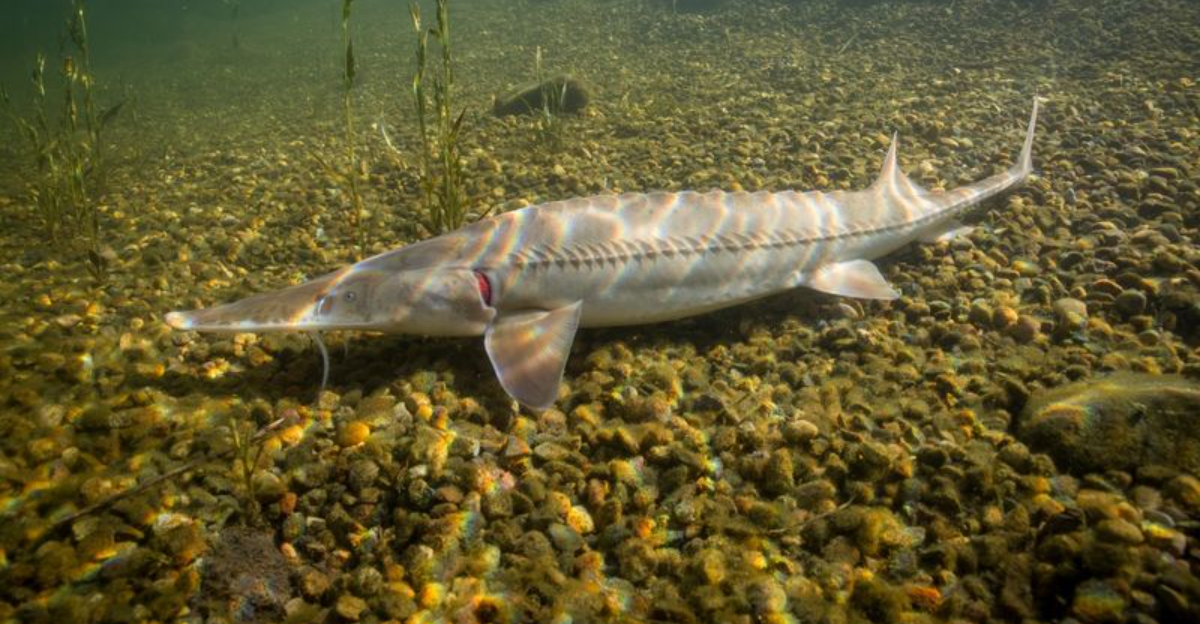
The mighty Mississippi River is more than just a waterway – it’s a thriving ecosystem teeming with fascinating wildlife. From mysterious creatures hidden in its murky depths to the animals that dance along its surface, this river supports an incredible diversity of life.
Let’s explore the remarkable creatures that call America’s greatest river home.
1. Silent Shadow: The Paddlefish
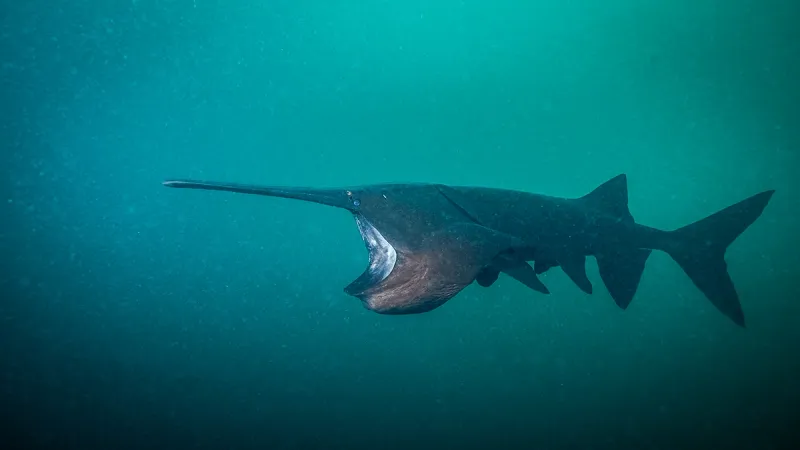
Like prehistoric ghosts, paddlefish have glided through Mississippi waters for over 65 million years with barely any evolutionary changes. Their bizarre, paddle-shaped snouts act as sensory organs to detect tiny food particles.
Despite growing up to 7 feet long, these gentle giants feed exclusively on microscopic plankton, swimming with their huge mouths wide open.
2. River Monster: Alligator Gar
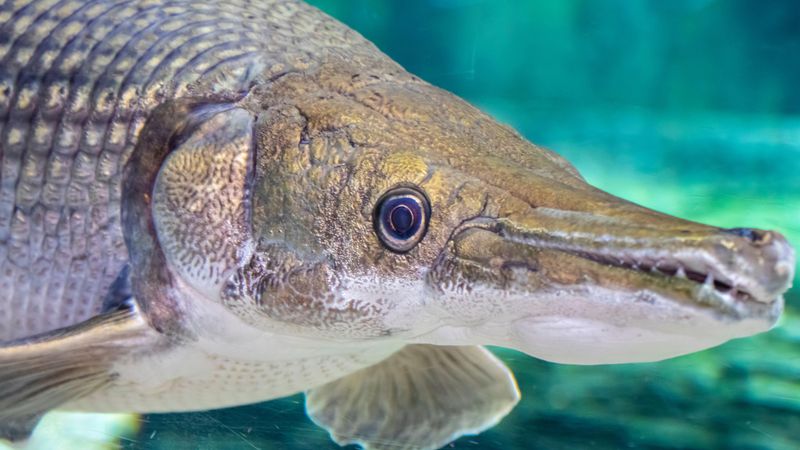
Armored like medieval warriors, these fearsome fish can reach 10 feet long and weigh over 300 pounds! Their double row of teeth and alligator-like snouts make them look like something from a horror movie.
Surprisingly resilient, alligator gar can actually breathe air and survive in waters too oxygen-poor for other fish.
3. Whiskered Giants: Blue Catfish

Imagine hooking something that weighs more than your refrigerator! Blue catfish can grow to monstrous sizes, with the Mississippi record-holder tipping scales at 124 pounds.
Their sensitive whiskers (barbels) work like underwater fingertips, helping them locate food in the muddy darkness. These nocturnal hunters rule the river bottom with surprising speed and strength.
4. Freshwater Phantom: Pallid Sturgeon
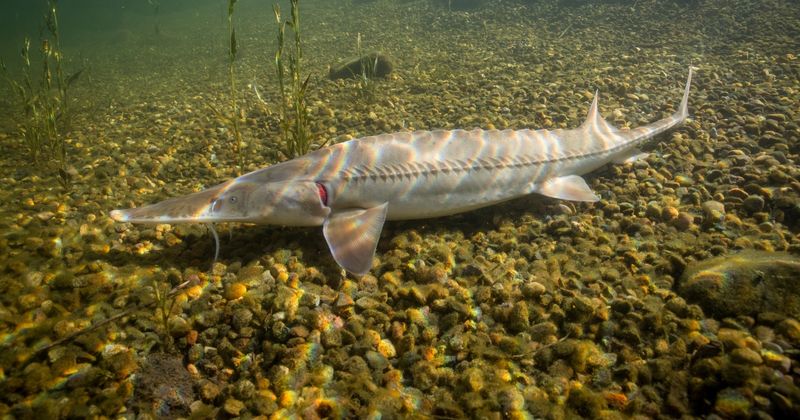
Time travelers from the dinosaur era, these endangered living fossils have remained virtually unchanged for 70 million years. With armor-like plates instead of scales and a vacuum-like mouth, they’re truly river oddities.
So rare that spotting one is like finding a unicorn, pallid sturgeon navigate the Mississippi’s depths using sensory pits that detect electric fields from prey.
5. Slimy Invaders: Asian Carp
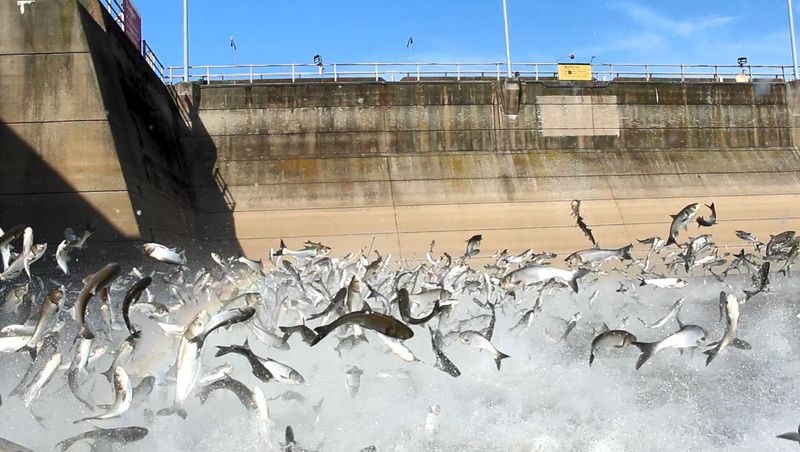
Famous for their acrobatic jumps that can knock boaters unconscious, these unwanted immigrants literally fly out of the water when startled. Introduced in the 1970s, they’ve become the river’s most problematic residents.
A single female can release over a million eggs annually, helping explain how they’ve overwhelmed native fish populations throughout the Mississippi basin.
6. Mud Puppies: Mississippi Salamanders

With feathery external gills that look like fancy red hairdos, these aquatic salamanders never grow up! Unlike most amphibians, they keep their gills throughout adulthood, remaining permanently underwater.
Often mistaken for baby alligators by startled swimmers, these harmless creatures can live up to 30 years in the river’s murky shallows.
7. Ancient Snapper: Alligator Snapping Turtle
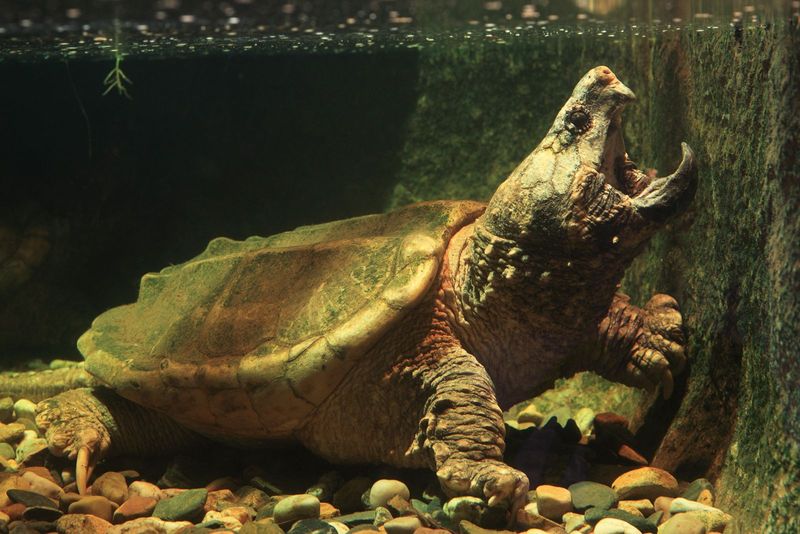
Nature’s perfect ambush predator lurks beneath fallen logs, using a worm-like tongue appendage that wriggles to lure curious fish. With jaws powerful enough to snap broomsticks, they’re the largest freshwater turtles in North America.
Despite their fearsome appearance, these prehistoric-looking reptiles can live over a century in the wild.
8. River Wolves: Flathead Catfish
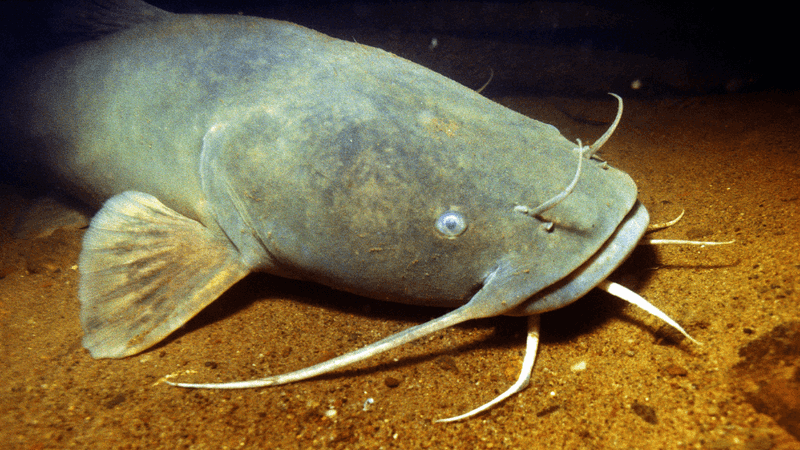
Unlike their scavenging catfish cousins, these aggressive predators actively hunt live prey. With a flattened head and wide mouth that earned them the nickname “shovelhead,” they’re the river’s apex ambush hunters.
Masters of patience, flatheads can remain motionless for hours before lunging with surprising speed. Their mottled yellow-brown coloration provides perfect camouflage among river rocks.
9. Sky Kings: Bald Eagles
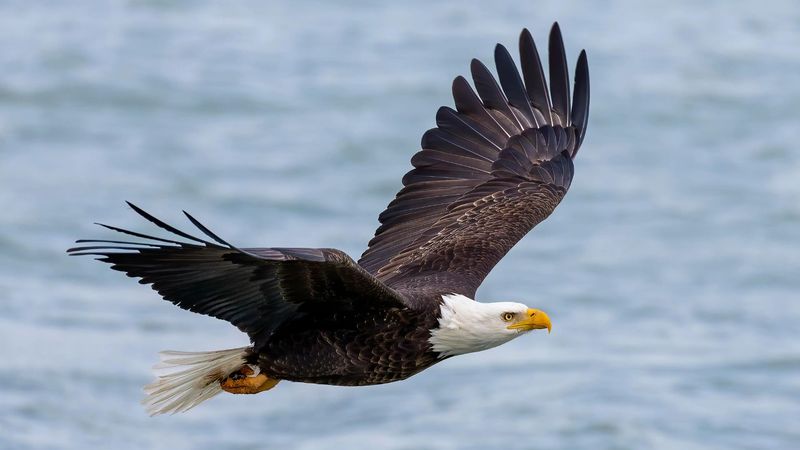
From near extinction to river royalty, America’s national bird has made an incredible comeback along the Mississippi. Winter brings hundreds of these majestic hunters to the river’s unfrozen sections.
With vision eight times sharper than humans, they can spot fish from a mile away! Their spectacular fishing dives can reach speeds of 100 mph before their talons pierce the water’s surface.
10. Riverbank Architects: American Beavers
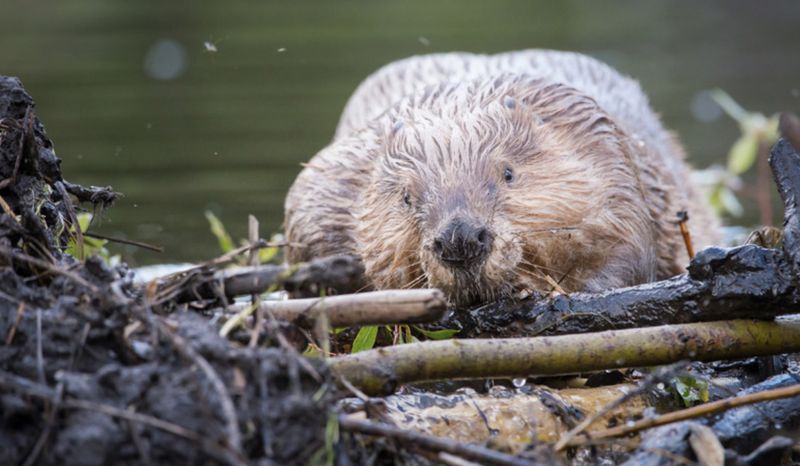
Mother Nature’s engineers transform entire ecosystems with their impressive dams and lodges. A single beaver family can fell over 200 trees annually, creating wetland habitats that benefit countless other species.
Their waterproof fur was once so valuable that beavers were nearly wiped out along the Mississippi. Today, their distinctive tail slaps warning other beavers of danger can be heard along quiet stretches.
11. Acrobatic Hunters: River Otters
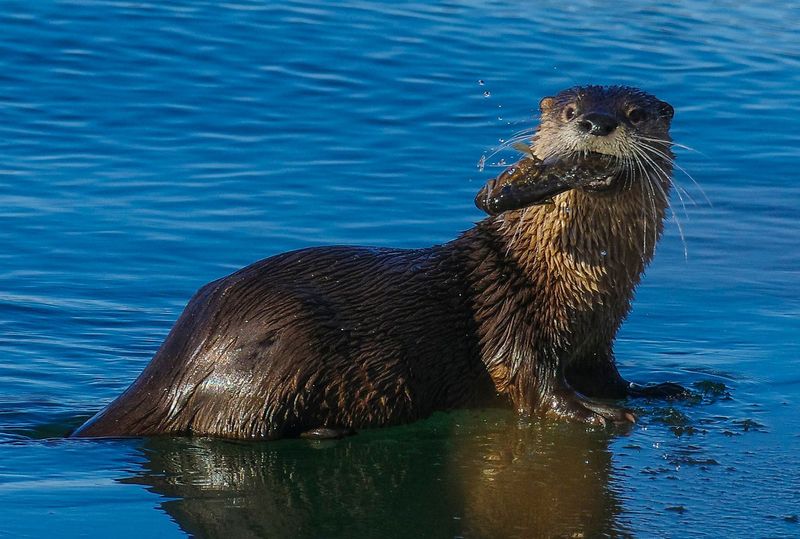
Imagine underwater ballet dancers with fur! These playful mammals turn fishing into performance art, spinning, diving and somersaulting through the water with infectious joy.
Specially adapted whiskers help them detect prey movements underwater. After nearly disappearing from the Mississippi, successful reintroduction programs have brought these charismatic creatures back to delight riverside observers.
12. Marsh Stalkers: Great Blue Herons
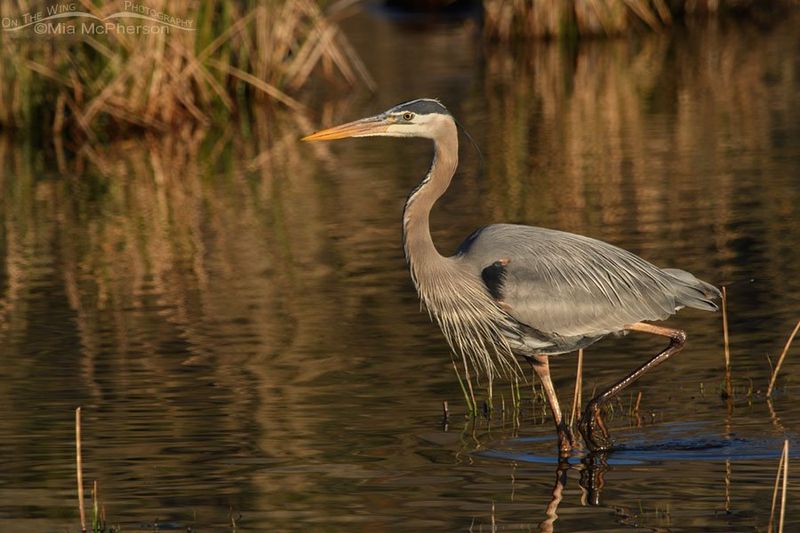
Standing still as statues in shallow water, these patient hunters can freeze in place for what seems like forever. Then – lightning strike! Their dagger-like bills spear fish with deadly precision.
Despite their massive 6-foot wingspans, these prehistoric-looking birds weigh just 5-6 pounds thanks to hollow bones. Their distinctive squawking calls echo across Mississippi backwaters at dawn and dusk.
13. Swamp Kings: American Alligators
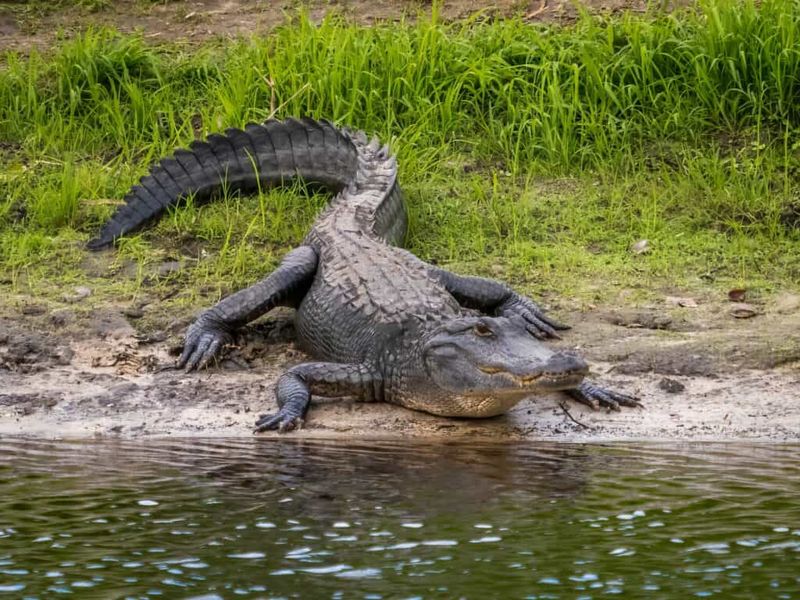
Only found in the southernmost stretches of the Mississippi, these living dinosaurs can exceed 13 feet long! After surviving 200 million years of evolution, they nearly disappeared before conservation efforts saved them.
Despite their fearsome reputation, they’re surprisingly attentive parents. Mother gators will carry their newly hatched babies in their mouths and protect them fiercely for up to two years.
14. Masked Bandits: Raccoons
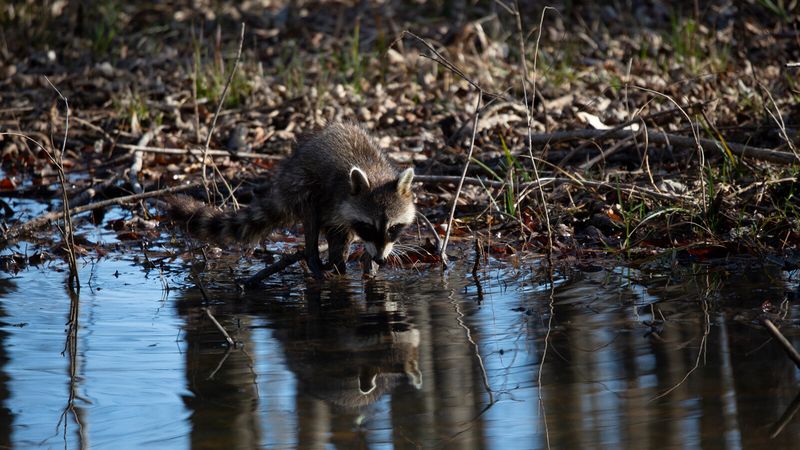
With paws as sensitive as human fingertips, these riverside thieves can feel exactly what they’re touching underwater without looking. This incredible adaptation helps them locate crayfish, frogs, and mussels even in complete darkness.
Their distinctive “washing” behavior isn’t actually cleaning food but enhancing their tactile sensitivity. Mississippi raccoons often create elaborate latrine sites that researchers use to track population health.
15. Riverside Goliaths: White-Tailed Deer

Surprisingly strong swimmers, these woodland icons can paddle across the Mississippi’s entire width when necessary. Their water-repellent fur traps air bubbles for extra buoyancy during river crossings.
Dawn and dusk bring them to the river’s edge to drink, creating perfect silhouettes against the water. Despite their grace, they’re responsible for more human deaths than any other Mississippi wildlife – through vehicle collisions.

